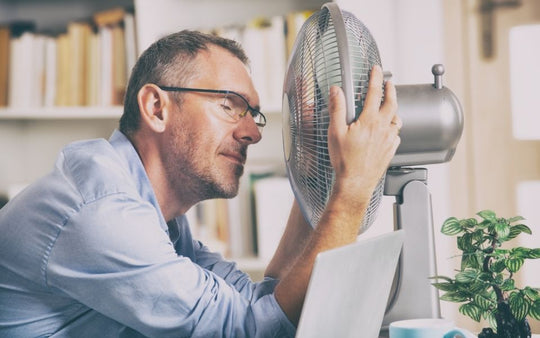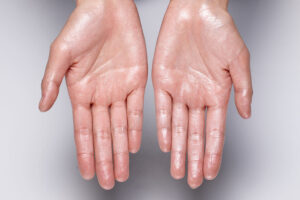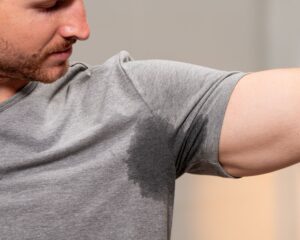Table of Contents
Do you suffer from excessive sweating?
Hyperhidrosis, the official medical term for profuse sweating, affects millions here in the USA and around the world.
Antiperspirants with aluminum chloride are the first line of defense against extreme sweating. There’s a lot of information floating around about antiperspirants and aluminum. For your convenience, we’ve compiled the most important stuff for your quick reference.
6 Things You Should Know About Aluminum Chloride
- What is aluminum chloride?
- How does aluminum chloride stop sweating?
- Is aluminum chloride safe? False claims debunked
- What are the side effects of aluminum chloride and how to minimize them?
- Other forms of aluminum used in antiperspirants
- Discovery and history of aluminum chloride
What is aluminum chloride?
(Read on with caution – scientific terms to follow)
The chemical formula for aluminum chloride is AICI3. As its name implies, it is a chemical compound of aluminum and chlorine. For you chemistry buffs, AICI3 has three electrons in its valence shell. It forms a covalent compound with chlorine. It doesn’t form an octet by combining with chlorine, so it can take 2 more electrons. This makes it a Lewis Acid (Lewis acid is a compound that can take an electron from a donor compound.) Whew!
The molar mass of aluminum chloride is 133.34 g/mole. (What the heck is a mole?) A mole is a unit of measurement used by chemists. It indicates the number of atoms, ions, molecules, etc., in a given chemical sample. Fun fact: Aluminum chloride can exist as a solid, liquid or gas.
Aluminum chloride is classified as an aluminum salt. It is found naturally in rocks that were formed as the earth was born. It can also be synthesized. As a solid, it is a coarse white powder. Often it is found contaminated with iron which gives it a yellow color. Aluminum chloride has a low melting point, and a low boiling point as well. It is highly reactive when it comes into contact with water. It has a strong, sharp odor, and can’t burn or catch on fire.
The uses of aluminum chloride are varied and include the production of pure aluminum metal. Large amounts are also produced for use in other industries too. It is used in the making of paint, synthetic rubber and in making petrochemicals. Aluminum chloride is found in nail strengtheners and air fresheners, and it can also treat wastewater. It has a lot of uses!
Most importantly, aluminum chloride is used to make antiperspirants, which offers the greatest benefit of all — it helps stop excessive sweating. By the way, if you’re looking for a strong antiperspirant, this one works pretty good 😉
How does aluminum chloride stop sweating?
There are two types of sweat glands found in your body, apocrine and eccrine. The eccrine sweat glands are far more numerous. They’re responsible for most of the sweat your body produces.
When an antiperspirant like SweatBlock is applied to the underarms (or other areas of the body), aluminum ions are absorbed. Dr. Eric Hanson of the University of North Carolina’s Department of Dermatology says, “The aluminum ions are taken into the cells that line the eccrine-gland ducts as the opening of the epidermis, the top layer of the skin.”
Dr. Louis Kuchnir, a physical chemist who practices in Marlborough, Massachusetts, describes the process in more detail. He explains that an aluminum chloride molecule can bind six water molecules. It can also tightly bind additional layers of 12-20 water molecules, “making the water very viscous such that the weak muscles that push sweat out of our sweat glands are unable to move the sweat to the surface of our skin,” he says.
Dr. Kuchnir continues, “When aluminum chloride gets close to water, it soaks it up and thickens it. By spreading it over the areas that perspire, it thickens the water in the top of the duct where the sweat’s coming out, and that thickening, like a gel, will block it.”
In layman’s terms, aluminum chloride and other aluminum compounds react to sweat. The resulting reaction forms a gel-like plug that blocks sweat from reaching the skin’s surface.
There you have it. That’s how antiperspirants with aluminum chloride work. Isn’t medical science amazing?
Is aluminum chloride safe? False claims debunked
You may have read something somewhere or heard rumors asserting that aluminium chloride is not safe. Some deeply flawed studies have linked its use to breast cancer, Alzheimer’s disease, and even kidney disease.
So, what’s the truth?
The International Hyperhidrosis Society notes that aluminum chloride has been safely used for over 80 years and has proven to be effective and non-toxic.
Let’s briefly consider one of the most persistent rumors: Aluminum chloride in antiperspirants causes breast cancer. This is simply not true.
The authors of these now discredited studies asserted that the chemicals in antiperspirants, including aluminum chloride, are absorbed through the skin in the underarms. They claimed the chemicals then interact with DNA creating malignant mutations.
Because most breast cancers begin in the upper and outer portion of the breast, the region closest to the armpit where antiperspirants are used, they assumed antiperspirants must be responsible for some breast cancers.
Not so!
“Why you would think that antiperspirant would somehow go upstream and get into your lymph nodes and then somehow get into the breast is unclear,” states Dr. Timothy J. Moynihan. Dr. Moynihan, an oncologist, serves as the Education Chair and consultant for the Division of Medical Oncology at the Mayo Clinic. “It doesn’t make sense other than the fact that it’s in the neighborhood.”
Any claims that aluminum chloride in antiperspirants can also be responsible for Alzheimer’s disease and kidney disease have been similarly disproven. “These products can be used with high confidence of their safety. They’ve been used for many years, and there’s no evidence that suggests a problem,” states John Bailey, Ph.D., Chief Scientist with the Personal Care Products Council.
There’s much more reliable information available regarding the safety of aluminum chloride.
What are the side effects of aluminum chloride and how to minimize them?
The possible side effects of aluminum chloride are mild. The most commonly reported side effects are itching or a mild burning immediately after application. Tingling or a prickly sensation are also common side effects. These are short-lived and normally disappear shortly after application. If skin irritation persists you should talk to your doctor.
The possibility of itching, burning or tingling or other skin irritation due to aluminum chloride in deodorants or antiperspirants can be minimized by observing these precautions:
- Wait 24 to 48 hours after shaving before applying.
- Never apply an aluminum chloride antiperspirant to broken or infected skin.
- Let your underarms or other areas where antiperspirant has been applied to completely air dry before putting on your clothing.
For people with extremely sensitive skin, aluminum chloride antiperspirants or antiperspirant deodorants may not be a viable solution.
Other forms of aluminum used in antiperspirants
While aluminum chloride is the most common aluminum compound used in today’s antiperspirants, there are other forms of aluminum that are also used to reduce sweating and treat hyperhidrosis. They are:
- Aluminum Chlorohydrate (also known as Aluminium Chlorohydrate).
- Aluminum Zirconium Tricholorohydrex Glycine
- Aluminum Chloride Hexahydrate
- Aluminum Hydroxybromid
All of these aluminum salts work in the same fashion as aluminum chloride. However, not all forms of Aluminum are created equal. Some forms are stronger than others and may have longer lasting results. For example, an antiperspirant with 10% aluminum chloride is not the same as an antiperspirant with 10% aluminum zirconium.
Discovery and history of aluminum chloride
Aluminum chloride was discovered in 1825 by Hans Christian Oersted, a distinguished Danish physicist and chemist. It is one of the oldest chemicals used in organic chemistry.
Aluminum salts were marketed as an antiperspirant as early as 1903 in a product named Everdry. Another notable and popular brand was Odo-ro-no, invented by a Cincinnati surgeon who suffered from sweaty hands. His daughter promoted Odo-ro-no throughout the country. Her company embarked upon an aggressive marketing campaign in 1919 featuring ads highlighting “a subject too often avoided.” That subject was the foul-smelling underarms of women. The popularity of Odo-ro-no skyrocketed and sales doubled almost overnight.
Three years previous to the debut of Odo-ro-no, an Illinois dermatologist, Arthur W. Stillians, published a cure for profuse sweating. Dr. Stillians observes, “the knowledge that an unpleasant odor clings to one makes the sensitive person dread to meet others.” Those who suffer from hyperhidrosis will confirm Dr. Stillian’s statement. Hyperhidrosis messes up the lives of those who have it— emotionally, physically, and socially.
This was a time when people with hyperhidrosis symptoms were often dosed with X-rays. But instead of zapping his patients with dangerous radiation, Stillians offered a much better solution in the form of a revolutionary hyperhidrosis treatment: An aluminum chloride cream that could be applied three times a week to the underarms. He wrote in a medical journal of the period, “In 20 cases in which I have used this lotion, it has never failed to give relief.” It was a harbinger of things to come.
Unfortunately, both Stillian and Odo-ro-no suffered from a common problem. The aluminum chloride contained in these early products could stain clothing and irritate the skin. Stillians notes in his medical journal, “The drug is not wholly bland. For excessive use of it will cause a sharp itching or stinging sensation.”
It would be 1940 before anyone found a way to reduce the unpleasant side effects of antiperspirants made with aluminum chloride. A chemist, Jules Montenier, found a way to buffer the acidity. He filed a patent for the process and an antiperspirant product called Stopette, (great name, BTW) was introduced. In postwar America, a significant uptick in office life led to the increased popularity of deodorants and antiperspirants. In the early 1950’s, roll-ons were born. Aerosol products hit store shelves in the late 1960’s. Today the deodorant and antiperspirant market is almost $76 billion worldwide.
It’s worth noting that while Everdry was the first antiperspirant, deodorants were actually introduced much earlier. They smelled nice but didn’t stop sweating. In the 1860’s, doctors found that certain chemicals used as disinfectants could eliminate body odor. A commercially available disinfectant made specifically for armpits found its way into the market in 1888. It was called Mum (another great name).
In conclusion
It’s easy for people who DON’T sweat excessively to say things like “Antiperspirant is bad!”
For those who suffer with hyperhidrosis, aluminum-based antiperspirants can be life-changing (in a good way). It works non-invasively to eliminate or significantly reduce profuse sweating for millions of people around the world.
According to qualified experts, aluminum chloride is safe. It’s been tested for over eight decades. Study after study demonstrates that there is no connection between antiperspirants and breast cancer, Alzheimer’s disease, kidney disease or any other malady. The American Cancer Society and the International Hyperhidrosis Society, among others, attest to its safety and efficacy.
You might also like...
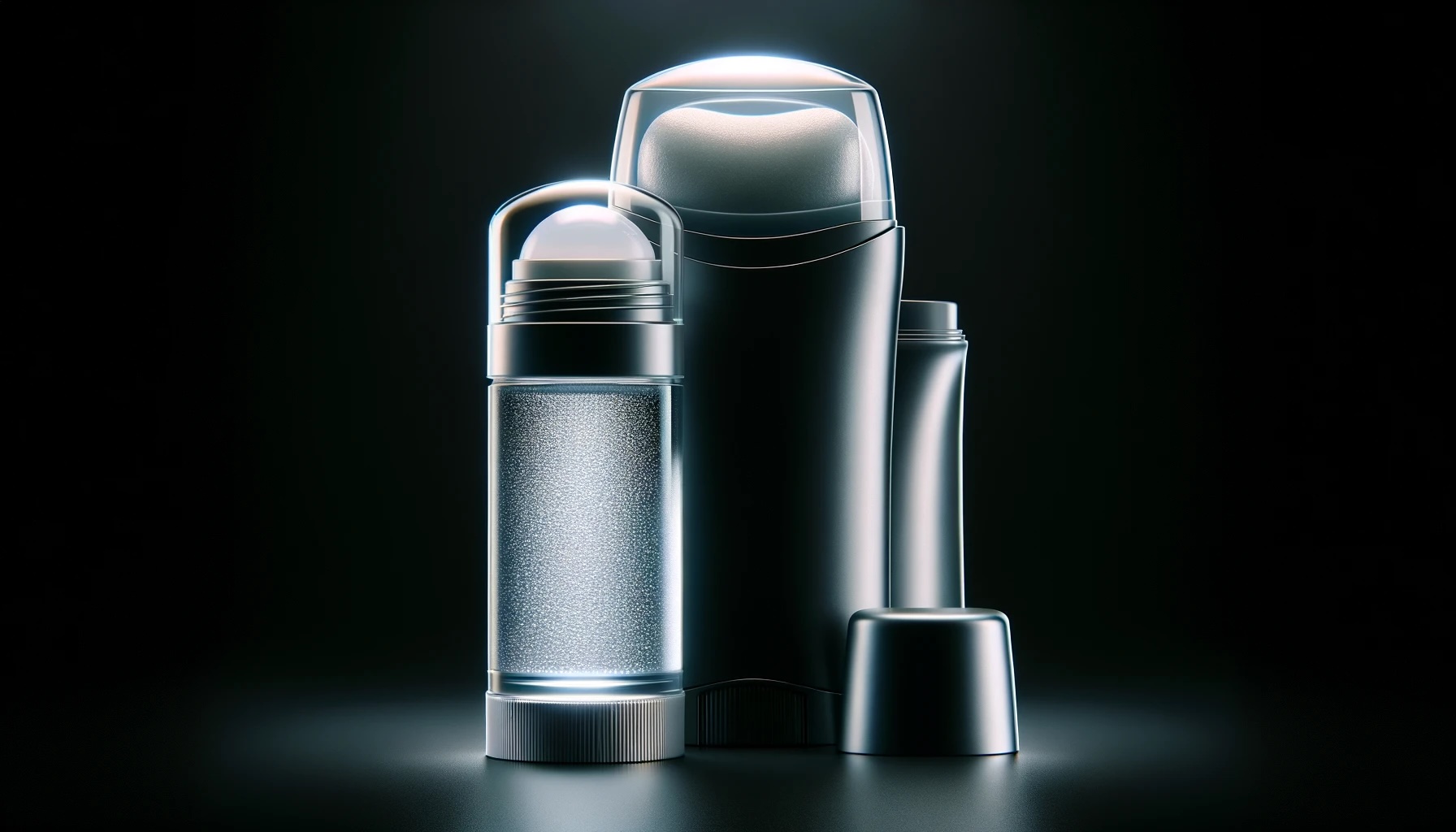
Antiperspirant vs Deodorant: What’s the Difference?
Table of Contents Did you know that deodorant and antiperspirant aren’t the same? It’s okay if you didn’t; most people

Is Antiperspirant Bad for You? Common Myths Explored and Debunked
Table of Contents You’ve heard the rumors. If you use (or have considered using) an antiperspirant containing aluminum chloride, you’re
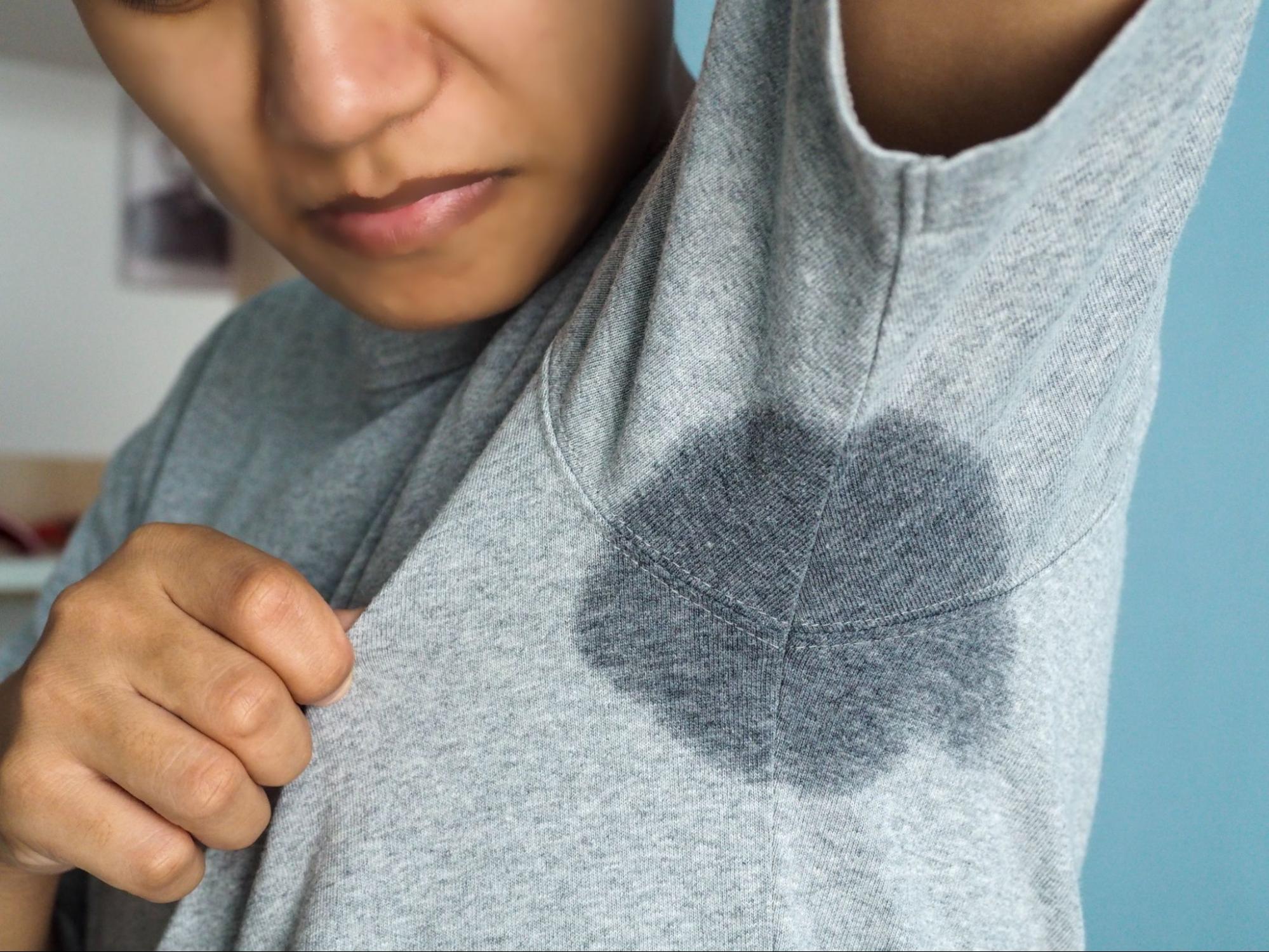
Looking for the Best Prescription-Strength Antiperspirant? Read This First!
Table of Contents When sweating reaches epic proportions, you need something more than pedestrian, store-shelf antiperspirants. You need a heavy
(Read on with caution – scientific terms to follow)
The chemical formula for aluminum chloride is AICI3. As its name implies, it is a chemical compound of aluminum and chlorine. For you chemistry buffs, AICI3 has three electrons in its valence shell. It forms a covalent compound with chlorine. It doesn’t form an octet by combining with chlorine, so it can take 2 more electrons. This makes it a Lewis Acid (Lewis acid is a compound that can take an electron from a donor compound.) Whew!
The molar mass of aluminum chloride is 133.34 g/mole. (What the heck is a mole?) A mole is a unit of measurement used by chemists. It indicates the number of atoms, ions, molecules, etc., in a given chemical sample. Fun fact: Aluminum chloride can exist as a solid, liquid or gas.
Aluminum chloride is classified as an aluminum salt. It is found naturally in rocks that were formed as the earth was born. It can also be synthesized. As a solid, it is a coarse white powder. Often it is found contaminated with iron which gives it a yellow color. Aluminum chloride has a low melting point, and a low boiling point as well. It is highly reactive when it comes into contact with water. It has a strong, sharp odor, and can’t burn or catch on fire.
The uses of aluminum chloride are varied and include the production of pure aluminum metal. Large amounts are also produced for use in other industries too. It is used in the making of paint, synthetic rubber and in making petrochemicals. Aluminum chloride is found in nail strengtheners and air fresheners, and it can also treat wastewater. It has a lot of uses!
Most importantly, aluminum chloride is used to make antiperspirants, which offers the greatest benefit of all — it helps stop excessive sweating. By the way, if you’re looking for a strong antiperspirant, this one works pretty good 😉




